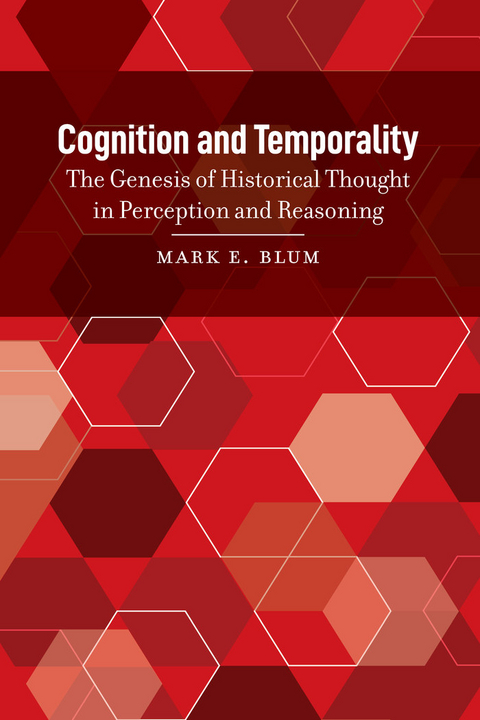
Cognition and Temporality
Peter Lang Publishing Inc (Verlag)
978-1-4331-6636-5 (ISBN)
Cognition and Temporality: The Genesis of Historical Thought in Perception and Reasoning argues that both verbal grammar and figural grammar have their cognitive basis in twelve characteristic forms of judgment, distributed among individuals in human populations throughout history. These twelve logical forms are context-free and language-free foundations in our attentional awareness and shape all verbal and figural statements. Moreover, these types of historical judgment are psychogenetic inheritances in a population, and each serves a distinct problem-solving function in the human species. Through analysis of verbal and figural statements, Mark E. Blum contends, the researcher can find evidence of these forms of judgment and in turn analyze how the event to which those statements attend is formally constructed by that judgment. This construction guides how the event is assessed, approached, and engaged in the process of problem-solving.
Artists and aestheticians in the early twentieth century—including Wassily Kandinsky, Stephen C. Pepper, and Andrew Paul Ushenko—have all posited an inherited attentional perspective in individuals, manifested in the logical correspondence between their distinctive verbal and figural grammars. Cognition and Temporality elaborates these claims, arguing that while the styles of well-known writers and artists are conditioned by the public styles of a particular time period, variations in personal style manifest one’s inherited form of judgment and the characteristic grammars that express that form. Through rigorous visual and stylistic analysis, this book demonstrates the expression of these forms among notable painters, historians, and writers across history. The result is a wide-ranging and provocative contribution to phenomenology, aesthetic philosophy, and cultural history.
Mark E. Blum has served in the Department of History at the University of Louisville since 1976 and has been a professor in the department for almost twenty years. He received his MA and PhD in history from the University of Pennsylvania. Before joining the University of Louisville faculty, he was Visiting Fellow at the Carl Rogers Center for Studies of the Person. His previous book, Continuity, Quantum, Continuum, and Dialectic: The Foundational Logics of Western Historical Thinking, was published by Peter Lang in 2006.
List of Illustrations – Acknowledgements – Introduction – Discerning the Attentional Episteme in Its Verbal and Figural Grammar – The Problematic Modality of Continuity, Quantum, Continuum, and Dialectic – The Assertoric Modality of Continuity, Quantum, Continuum, and Dialectic – The Apodeictic Modality of Continuity, Quantum, Continuum, and Dialectic – An Evolutionary Myth of the Development of Differing Forms of Historical Judgment – The Argument for the Psycho-genetic Cause of Historical Logics – Ergon and Energeia in Verbal and Figurative Judgment: The Ushenko and the Pepper Family.
| Erscheinungsdatum | 06.03.2022 |
|---|---|
| Zusatzinfo | 42 Illustrations, unspecified |
| Verlagsort | New York |
| Sprache | englisch |
| Maße | 150 x 225 mm |
| Gewicht | 403 g |
| Themenwelt | Geisteswissenschaften ► Geschichte |
| Geisteswissenschaften ► Philosophie ► Erkenntnistheorie / Wissenschaftstheorie | |
| ISBN-10 | 1-4331-6636-4 / 1433166364 |
| ISBN-13 | 978-1-4331-6636-5 / 9781433166365 |
| Zustand | Neuware |
| Haben Sie eine Frage zum Produkt? |
aus dem Bereich

![Was heißt Denken?. Vorlesung Wintersemester 1951/52. [Was bedeutet das alles?] - Martin Heidegger](/media/113619842)
